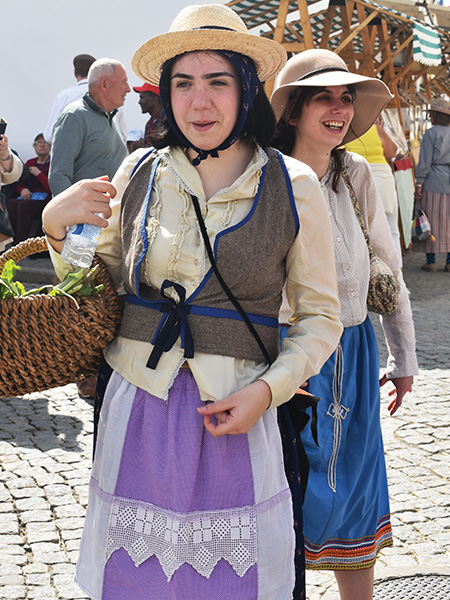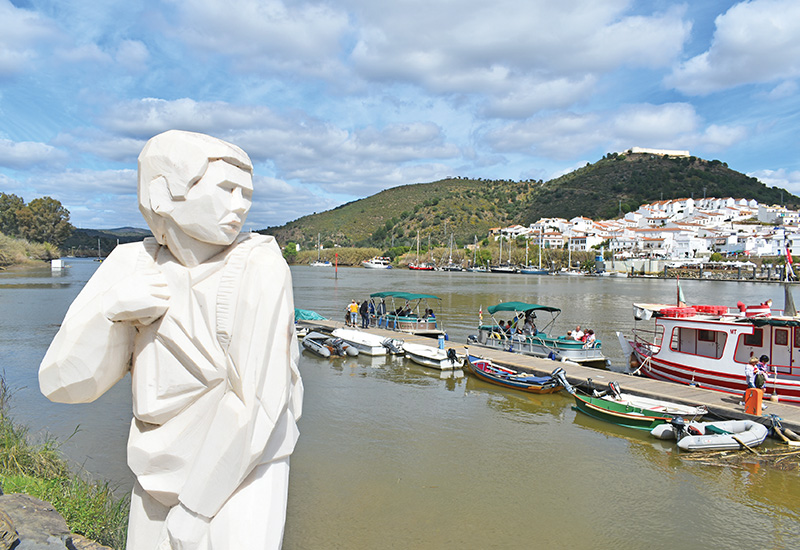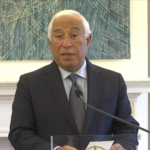At 1,214 km in length, the border between Portugal and Spain is the longest uninterrupted border within the European Union. It has been free of border control since 1995. The movement of goods and freedom of travel is something that residents of both countries have come to enjoy.
Today, I am in Alcoutim on the river bank of the Guadiana River, looking over to the Spanish village of Sanlucar de Guadiana. I am visiting the Festival do Contrabando. Some of the locals have dressed up in the traditional costumes of a time when things were very different. In those days, life was hard and smuggling was a part of everyday existence. To understand why ordinary people risked being sent to prison and even losing their lives in illegal trade, a little history and geography is a good place to start.
Even today, with a fast road coming up from Vila Real de Santo António, Alcoutim feels a little off the beaten track. Go back in time and this village was extremely remote, like a little outpost stuck on the eastern edge of the region. Originally, it was a simple garrison with a few soldiers to keep an eye on the neighbours. There is evidence of Roman occupation and a history of Spanish armies crossing the river to invade. I find myself asking, why here?
The answer is simply because this is the narrowest part of the river on the Algarve section of the border and, therefore, the best place to cross. With the settlement on the Spanish side being established around 1428, the twin villages became a harbour and, by the turn of the sixteenth-century, trading from one side to the other was well established. Trading meant paying taxes and by all accounts, the Lord of Alcoutim did very nicely out of it. Around this period, the smuggling of Africans arriving in Portugal to sell as slaves across the border was another lucrative business. Cattle and other livestock (that had not been taken by the invading armies) also got transported illegally.

The remoteness of the location meant that the two sides developed a strong cooperation and reliance on each other. There are other examples of Spanish and Portuguese “sister” towns, like Eljas and Foios, that formed a union through cooperative smuggling. In the region of the Serra de São Mamede national park, which the border runs through, there is still a kind of mixed-up language called Porteñol in some of the villages. In one of the articles that I came across, there was a smuggler’s house in the region called Casa de la Duda (house of doubt), where the front door opened to Spain and the back door to Portugal. Apparently, the border has been moved and the house is now Spanish.

Returning to Alcoutim, everything was going along nicely for the town until the Spanish civil war came along in 1936 and trading across the river stopped. With no connecting boat to carry people and goods, residents had to travel south, cross the river at Castro Marim and then travel north again on the other side. This was inconvenient, to say the least. In order to continue supplying each other with vital goods, smuggling became the only option. For many families, this simply meant survival and was the only way of getting basics like flour, sugar, salt, coffee and textiles. It was also a way of avoiding the heavy taxes mentioned earlier and for many, the financial benefit would have been hard to resist.
After the civil war came the hardships of a dictatorship for the Spanish, which the Portuguese knew all about as well. Now even the absolute basics of bread and cheese were being crossed over the border to feed the impoverished Spaniards. Many of the customs officers employed to stop the smugglers also found the extra income from being paid to turn a blind eye hard to turn down.
These people may have been engaged in illegal activity, but in many cases, they were ordinary men and women working the fields by day and smuggling by night under moonlight, not by choice, but by necessity.
Sitting here now, looking across the peaceful river in the modern world, it is hard to imagine those days. Young men carrying 40 or 50 kilos on their backs in order to either cross mountains further to the north, row in small boats or even swim against the fast-flowing river currents. Some reported taking an extra five kilos in their hands so that if spotted by the civil guards, who were on a constant lookout, they would ditch the heavy backpack and run off with the small “lifesaver”. Others were not so fortunate. Apparently, in some of the harder-to-access areas, it was simply too much effort to pick up the smugglers and take them to trial; it was easier to just shoot them on the spot.
The battle between the authorities and those seeking to profit from smuggling drugs and other modern contraband continues today, and I guess that while there are borders, it will continue to happen into the future.
Main image: Looking over the shoulder of the “contrabandista” statue over the river to Sanlucar de Guadiana













